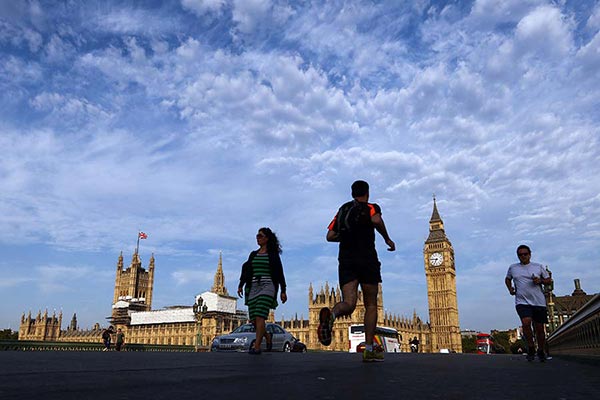Study: Amazon rain forest grew after climate change
Switch to wetter conditions may have led to tree coverage 2,000 years ago
Swaths of the Amazon may have been grassland until a natural shift to a wetter climate about 2,000 years ago let the rain forests form, according to a study that challenges common belief that the world's biggest tropical forest is far older.
The arrival of European diseases after Columbus crossed the Atlantic in 1492 may also have hastened the growth of forests by killing indigenous people farming the region, the scientists wrote in the US journal Proceedings of the National Academy of Sciences.
"The dominant ecosystem was more like a savanna than the rain forest we see today," John Carson, lead author at the University of Reading in England, said of the findings about the southern Amazon.
The scientists said that a shift toward wetter conditions, perhaps caused by natural shifts in the Earth's orbit around the sun, led to growth of more trees starting about 2,000 years ago.
The scientists studied man-made earthworks - uncovered by recent logging in Bolivia - that included ditches up to about a kilometer long and up to 3 meters deep and 4 meters wide.
They found large amounts of grass pollen in ancient sediments of nearby lakes, suggesting the region had been covered by savanna. They also found evidence of plantings of maize, pointing to farming.
Farm evidence
The Amazon has traditionally been seen as a pristine, dense rain forest, populated by hunter-gatherers. In recent years, however, archaeologists have found hints that indigenous peoples lived in the thick forest, but managed to clear tracts of land for farming.
The PNAS study suggests a new idea - that the forest simply did not exist in some regions.
The "findings suggest that rather than being rain forest hunter-gatherers, or large-scale forest-clearers, the people of the Amazon from 2,500 to 500 years ago were farmers," the University of Reading said in a statement.
Carson said that perhaps one-fifth of the Amazon basin in the south may have been savanna until the shift, with forests covering the rest.
The Amazon rain forest affects climate change because trees soak up heat-trapping carbon dioxide as they grow and release it when they rot or are burned. Brazil has sharply slowed deforestation rates in recent years.
Michael Heckenberger, an expert on the Amazon at the University of Florida, said the study added to evidence that people living in the Amazon managed nature.
"These indigenous systems were highly sophisticated. ... There are over 80 domesticated or semi-domesticated crops in the Amazon," he said. "In Europe at the time, they were working with about six."
(China Daily 07/09/2014 page10)














